No employer wants to think about their workers being injured on the job, but it happens all too often. According to the latest data available, in 2019, Canada saw more than 271,000 lost-time injuries.
While that number may not seem high, keep in mind it is only for injuries that caused an employee to miss workdays. Countless other injuries occurred that were not grave enough to stop work but still need to be taken seriously, nonetheless.
As any Canadian employer understands, there are countless health and safety regulations created and enforced by the Canadian Centre for Occupational Health and Safety (CCOHS). These can be difficult enough to navigate. Add on top of that each province and territory having its own set of requirements employers must follow in the event of a work-related injury or illness.
When an employee is injured on the job, the last thing on anyone’s mind is paperwork, which is why it is important for employers to understand what to do ahead of time so everyone can be prepared.
Know What Your Jurisdiction Requires
To alleviate some of the in-the-moment panic that may come with a worksite injury or illness, we have compiled a quick reference regarding what needs to be reported — and how — in each Canadian jurisdiction, plus what to do when a federal employee is injured on the job.
Alberta
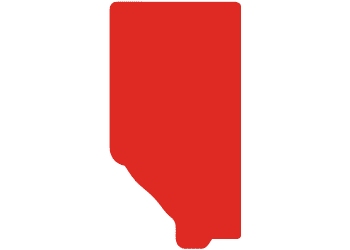
What must be reported?
A work-related incident needs to be reported to the Workers’ Compensation Board of Alberta if it results in, or is likely to result in, any of the following:
- Lost time or the need to temporarily or permanently modify work
- Permanent disability (amputation, hearing loss, etc.)
- A disabling or potentially disabling condition caused by occupational exposure or activity (poisoning, infection, respiratory disease, dermatitis, etc.)
- The need for medical treatment beyond first aid (assessment by physician, physiotherapy, chiropractic, etc.)
- Medical aid expenses (dental treatment, prescription medications, etc.)
- Death
What is the employer’s responsibility?
Within three days of becoming aware of an injury or illness, you must submit an Employer Report of Injury form to the WCB, providing all the details of the incident. This can be done through an online form or via fax.
There are certain situations when you must also contact the Alberta Occupational Health and Safety office. OHS should be called if an incident:
- Results in a death.
- Results in a worker being admitted to the hospital.
- Involves an unplanned or uncontrolled explosion, fire or flood.
- Involves the collapse or upset of a crane, derrick, hoist, or any component of a building or structure.
British Columbia

What must be reported?
As an employer, you must contact WorkSafeBC within three days if a worker:
- Must leave the jobsite for treatment at a medical facility.
- Misses time from work.
- Loses consciousness.
- Is diagnosed with a work-related disease.
- Develops symptoms of a mental health disorder related to work or the work environment.
- Suffers broken eyeglasses, dentures, hearing aid(s) or artificial limb(s) due to a work-related incident.
What is the employer’s responsibility?
WorkSafeBC recommends submitting your injury report online, as you are then able to make updates as needed. They also provide different forms for employers who have different levels of insurance coverage with them.
Each employer is responsible for conducting an investigation related to any incident that happens in their workplaces. They must also submit an employer incident investigation report (EIIRs) to WorkSafeBC.
Additionally, some incidents may require you to call WorkSafeBC’s reporting line immediately. These situations include serious injury or death of a worker, a major release of a hazardous substance, and major structural failure or building/equipment collapse.
Manitoba
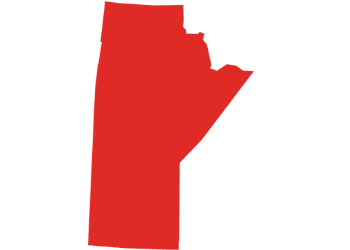
What must be reported?
Any workplace injury must be reported to the Workers Compensation Board of Manitoba within five business days. Late reporting could result in a fine.
The Manitoba Workplace Safety and Health Regulation also outlines certain serious incidents that must be reported immediately. These situations include anything:
- In which a worker is killed.
- In which a worker suffers:
- An injury from electrical contact.
- Unconsciousness.
- A fracture of the skull, spine, pelvis, arm, leg, hand or foot.
- Amputation of an arm, leg, hand, foot, finger or toe.
- Third-degree burns.
- Temporary or permanent loss of vision.
- A cut or laceration that requires medical treatment at a hospital.
- Asphyxiation or poisoning.
- That involves:
- The collapse or structural failure of a building, structure, crane, hoist, lift or temporary support system.
- An explosion, fire or flood.
- An uncontrolled spill or escape of a hazardous substance.
- The failure of an atmosphere-supplying respirator.
What is the employer’s responsibility?
The WCB provides many options for submitting incident reports to make it easy for all employers. The quickest method is using the Online Incident Reporting site, but you may also fill out an incident form and submit it via fax or email, or, during business hours, you can even call the WCB Claims Service Centre.
To notify Workplace Safety and Health (WSH) of a serious incident, you can call locally or toll-free at any time, or you may contact the nearest Workplace Safety and Health Branch. If you are reporting a serious incident, keep in mind that you will need to preserve the scene until WSH has been notified, or perhaps longer, if advised.
New Brunswick

What must be reported?
WorkSafeNB, charged with overseeing the implementation of health and safety measures within New Brunswick, defines an occupational injury as one that results in:
- Loss of consciousness.
- Amputation.
- A fracture other than to fingers or toes.
- A burn that requires medical attention.
- Loss of vision in one or both eyes.
- A deep laceration.
- Admission to a medical facility as an in-patient.
- Death.
Additionally, they need to be notified in cases of an accidental explosion, exposure to a biological, chemical or physical agent, or when a catastrophic equipment failure does or could have resulted in an injury.
What is the employer’s responsibility?
If any of the incidents noted above occur at your job site, you must file an Employer Report of Injury or Illness form within three days. Note that you will also be responsible for providing — or paying for — transportation to a medical facility, if necessary.
Newfoundland and Labrador

What must be reported?
A workplace injury is any incident that:
- Happens at work, on company property or on company business.
- Requires medical treatment.
- May or may not require time away from work.
What is the employer’s responsibility?
You will need to complete and submit an Employer’s Report of Injury to WorkplaceNL within three days of the incident occurring. Additionally, the affected employee will need to submit their own paperwork, including any necessary report from their healthcare provider along with the Worker’s Injury Report from WorkplaceNL.
Remember, all serious injuries and fatalities must be reported by calling Service NL. In these situations, serious injuries include:
- Fractures.
- Amputations.
- Sight loss.
- Serious internal hemorrhages.
- Burns that require medical attention.
- Any injury caused by explosives.
- Asphyxiation or poisoning by gas that results in a loss of physical control.
- Unconsciousness.
- Substantial blood loss.
Nova Scotia
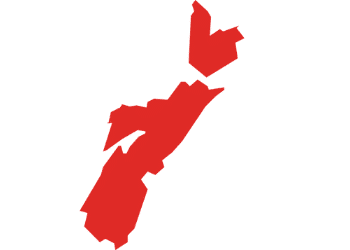
What must be reported?
Understanding what is considered an occupational injury in Nova Scotia is very straightforward. Any injury or illness requiring medical attention or that results in the employee losing time from work must be reported to the Workers’ Compensation Board.
What is the employer’s responsibility?
The WCB must receive your Injury Report Form within five business days of the incident being reported to you. The quickest option is to fill out the form online, but the form can also be faxed or mailed to the WCB offices in either Halifax or Sydney.
Additionally, if any of the following serious injuries or incidents occur, you must call or send a notice to the Nova Scotia Labour and Advanced Education’s OHS division.
- For fatalities, notify OHS immediately.
- For serious injuries, notify OHS within 24 hours.
- Unconsciousness
- Fracture of the skull, spine, pelvis, arm, leg, ankle, wrist or a major part of the hand or foot
- Loss or amputation of a leg, arm, hand, foot, finger or toe
- Third-degree burn
- Loss of sight in one or both eyes
- Asphyxiation or poisoning
- Any injury that requires admission to hospital
- Any injury that endangers a life
- For serious incidents, notify OHS within 24 hours.
- An accidental explosion
- A major structural failure or collapse of a building or other structure
- A major release of a hazardous substance
- A fall from a work area where fall protection is required by the regulations
Looking for more online safety training courses?
Ontario

What must be reported?
The Workplace Safety and Insurance Board (WSIB) says a workplace injury or illness must be reported if it resulted in an employee:
- Needing treatment from a health professional.
- Being absent from work.
- Earning less than regular pay (such as working fewer hours or being paid less per hour).
If the employee doesn’t need professional medical treatment but has been doing modified work for more than seven days, it must be reported on the eighth day of modified work.
What is the employer’s responsibility?
All injuries that fall under the above definitions must be reported to the WSIB within three days of the incident occurring. You are also responsible for investigating the incident and ensuring the employee receives all forms and information necessary to file their own claim with the WSIB.
If there is a workplace fatality or critical injury, it must be reported to the Ministry of Labour’s Health & Safety Contact Centre, the joint health and safety committee and the union, if applicable. Critical injuries include those that:
- Place life in jeopardy.
- Produce unconsciousness.
- Result in substantial loss of blood.
- Involve the fracture of a leg or arm, including a wrist, hand, ankle, foot, or multiple fingers or toes.
- Involve the amputation of a leg, arm, hand, foot, or multiple fingers or toes.
- Consist of burns to a major portion of the body.
- Cause the loss of sight in an eye.
Prince Edward Island
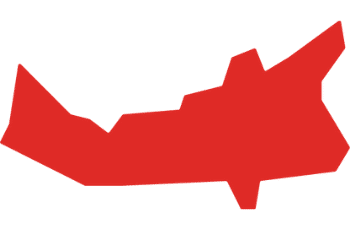
What must be reported?
On Prince Edward Island, a workplace injury has a very simple, clear definition, which is an injury that:
- Happens at work.
- Requires medical treatment.
- May or may not result in time off work.
What is the employer’s responsibility?
If a workplace injury occurs at your job site, you must first make sure the employee in question receives proper first aid and, if necessary, arrange and pay for transfer to a medical facility. Within three days of learning about the incident, you will need to submit an Employer’s Report – Form 7, either online, by mail or fax, or dropped off at the Workers Compensation Board of PEI offices in Charlottetown.
Serious injuries (such as those that cause or may cause a fatality, suffers a loss of limb, unconsciousness, substantial loss of blood, a fracture, an amputation of a leg, arm, hand, or foot, a burn to a major portion of the body, or the loss of sight in an eye) must be reported to the WCB’s Occupational Health & Safety division within 24 hours.
The WCB also requires a report submitted by the affected employee. You should make sure your employee has completed the Worker’s Report – Form 6 and has mailed, faxed or dropped it off in Charlottetown within six months from the date of the incident.
Quebec

What must be reported?
Within Quebec, a work accident is any sudden, unexpected event that occurs at work and results in an injury or illness to the worker(s) involved. The affected employee must have been injured while doing the tasks for which they are employed or while doing tasks other than those they normally do but which are still related to their work.
Additionally, for these purposes, occupational diseases are also considered to be work-related injuries. An occupational disease is caused by work, either by the work environment or the tasks related to it, and must be specific to or directly related to the risks associated with that work.
What is the employer’s responsibility?
Work accidents must be recorded in the Register of Accidents, Incidents and First Aid, which serves as a company’s official documentation of all injuries and illnesses. It is recommended that incidents be recorded even if there were no injuries. The Commission des normes, de l’équité, de la santé et de la sécurité du travail (CNESST) provides a free template in French, but an employer can create their own.
You must inform the CNESST as soon as possible in any case where:
- A worker suffered a major trauma (for example, loss of a limb).
- Several workers were injured and must take time off work.
- The accident caused property damage of $178,785 or more.
- The accident resulted in the worker’s death.
If the affected worker cannot return to work that same day, you must still pay them their full wages. If the worker is absent for up to 14 days, you must pay them 90% of their net wages for those days, not including the day of the accident. You will be able to have this amount reimbursed by CNESST:
- Fill out the “Avis de l’employeur et demande remboursement” form
- Give a copy to your worker
- Send the form, and a copy of the worker’s medical certificate, to the CNESST
If the worker cannot return to work for more than 14 days, the CNESST will pay them an income replacement indemnity to which they are entitled from the 15th day of absence. All workers are also entitled to submit their own claim with the CNESST to receive a refund for some or all of their medical expenses. In these instances, you should help them complete their Worker’s Claim form.
Saskatchewan

What must be reported?
There are two types of incidents that need to be reported for any worker within Saskatchewan, which are a work injury or a dangerous occurrence.
What defines a work injury is fairly straightforward. It is simply any injury that:
- Happens at work, on company property or while conducting company business.
- Needs medical attention.
- May or may not need time away from work.
On the other hand, a dangerous occurrence is any occurrence at a place of employment that did not result in, but could have resulted in, the death of a worker or required a worker to be admitted to a hospital for 72 hours or more, and includes:
- The failure or collapse of:
- A structure, scaffold, temporary falsework or concrete formwork.
- All or any part of an excavated shaft, tunnel, caisson, cofferdam, trench or excavation.
- The failure of a crane or hoist, or the overturning of a crane.
- Accidental contact with an energized electrical conductor.
- The bursting of a grinding wheel.
- An uncontrolled spill or escape of a toxic, corrosive or explosive substance.
- A premature or accidental detonation of explosives.
- The failure of an elevated or suspended platform.
- The failure of an atmosphere-supplying respirator.
What is the employer’s responsibility?
If a worker is injured on the job, you must make sure they receive first aid on site, and, if necessary, provide immediate transportation to a medical facility. Within five days of the incident, you must report the injury to the Saskatchewan Workers’ Compensation Board (WCB).
You will need to submit the Employer’s Initial Report of Injury (E1) form, which can be done online or by phone, fax or mail, and your worker will also need to submit a Worker’s Initial Report of Injury (W1) form. Remember to keep a copy of your completed E1 form for your company’s records.
The Saskatchewan Occupational Health and Safety Division must also be notified as soon as is reasonably possible in any of the following events:
- An incident that causes, or may cause, the death of a worker
- A worker required to be admitted to a hospital for at least 72 hours
- Any dangerous occurrence previously outlined
Northwest Territories and Nunavut
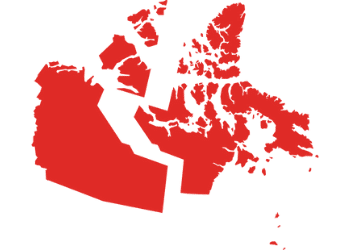
What must be reported?
The Workers’ Safety and Compensation Commission (WSCC), charged with overseeing the implementation of health and safety measures within the Northwest Territories and Nunavut, defines an occupational injury as one where a worker:
- Needs medical aid.
- Cannot return to work the same day or the following day.
- Loses consciousness.
- Was exposed to a dangerous substance.
What is the employer’s responsibility?
Whenever an injury or illness occurs on your job site, you must fill out an Employer’s Report of Incident and submit it to the WSCC within three days of the incident. You must also have the employee in question submit a Worker’s Report of Injury.as soon as possible.
Keep in mind that if you need to report an accident that caused serious bodily injury or created a dangerous occurrence, you must submit your incident report and also call the 24-hour Incident Reporting line at (800) 661-0792 as soon as is reasonably possible.
Yukon

What must be reported?
Any work-related incident that creates a need for medical treatment and/or time away from work needs to be reported to the Yukon Workers’ Compensation Health and Safety Board (YWCHSB). This includes an occupational disease caused by working conditions.
What is the employer’s responsibility?
The Employer’s Report of Injury/Illness needs to be completed and submitted to the YWCHSB within three days of an incident. If the employee visits with a physician, they will need to fill out the Doctor’s First Report within two days of seeing the affected patient.
Regardless of the severity of the injury, illness or disease, all occupational incidents must be documented and all records kept by the company for three years.
Federal Employees
What must be reported?
Any employee that works for one of the following employers can report work-related injuries or illnesses requiring medical care beyond first aid or resulting in lost time to the Federal Workers’ Compensation Service:
- The Government of Canada, in Canada or overseas
- Most federal Crown corporations
- Federal agencies
- The Senate
- The House of Commons
- The Library of Parliament
- The Office of the Senate Ethics Officer
- The Parliamentary Protective Service
- Note: Members of the Canadian Armed Forces and regular members of the Royal Canadian Mounted Police are not covered by the Act.
What is the employer’s responsibility?
If you have a federal employee that has received an occupational injury or illness, you will need to complete the Employer’s Report of Injury or Disease form that corresponds to the Canadian jurisdiction in which the employee normally works. All forms must be submitted within three days of the injury.
Below you will find quick links to the correct form for each province and territory:
- Alberta
- British Columbia
- Manitoba
- New Brunswick
- Newfoundland and Labrador
- Nova Scotia
- Ontario
- Prince Edward Island
- Québec
- Saskatchewan
- Northwest Territories/Nunavut
- Yukon
Employees traveling in Canada or abroad who are injured on the job are covered by Section 6 of the Government Employees Compensation Act, as long as they are engaged in work for their department or agency at the time of the injury.
Remember that for injuries that do not require the services of a medical doctor, you do not need to submit an official report, but you must maintain a record of the incident and keep such records in the workplace for two years.
The Importance of Filing Claims
Sometimes when an injury occurs, it may initially seem minor, such as a superficial cut to a worker’s arm, but there may be complications that develop later. Filing a claim means there is a record of the injury or illness in case there is a need for further treatment and medical care later.
Filing a claim also contributes to a culture of workplace safety. It shows that you as the employer are not trying to hide any health and safety information from your employees. Plus, having official records of these incidents can provide useful topics for future toolbox talks.
Train Your Employees
In many cases you will find that a workplace incident could have been easily avoided. Conducting a job safety analysis (JSA) will help you understand the most hazardous jobs in your workplace and allow you to determine what measures you can take to reduce or completely eliminate the likelihood of accidents, injuries and illnesses.
Sometimes conducting a JSA will reveal large gaps in how certain jobs are being performed, in which case you can look into creating a stronger employee safety training program. No matter what a job entails, you can be sure that a well-trained employee is always going to be safer than a poorly trained employee.
Taking online safety training is convenient as each of your employees can receive training on a wide range of topics that apply to them, from lockout/tagout to Transportation of Dangerous Goods (TDG) regulations and many more.
Another benefit to taking training online is how easy it is to repeat training as often as is needed — or as often as you would like. Some jurisdictions require training to be conducted at least annually, but because you never know when an inspection could occur, it is never a bad idea to brush up on safety training even when not required. See how SafetySkills can help you make sure your health and safety program is in line to hopefully prevent employee injuries, but also to understand what needs to be done in the event of a workplace injury or illness.


